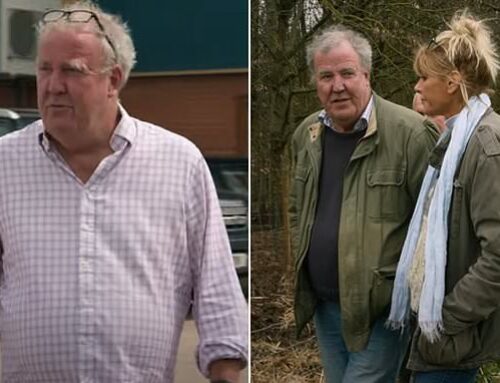How a climate activist teamed up with a gas utility to steer them toward renewable energy
January 7, 2025
Underground pipes and wells tap geothermal energy to heat and cool a neighborhood. Next stop, the world.

Three climate activists and three gas utility executives walk into a room.
It may sound like the start of a joke.
However, the meeting at an Eversource boardroom outside Boston in December 2016 marked the beginning of an improbable relationship that is redefining what it means to be a gas utility. Though still in its infancy, the work is beginning to transform how communities across the Commonwealth, the country, and the world can heat and cool their homes without fossil fuels.
The odds of anything productive coming out of that discussion seemed low. Prior to the meeting, the activists had “categorically attacked” the entire gas industry by calling out locations of hundreds of gas leaks across the city of Cambridge, according to Zeyneb Magavi, one of those three women.
Before the two groups sat down together, Bill Akley, then president of Eversource’s gas operations, was asked if he needed security and lawyers to join him and his colleagues in the boardroom. Akley passed, but assumed he was in for an earful.
“My expectations were, it’s going to be a list of demands and a lot of poking at all the things we’re doing wrong,” he said in a recent speech recalling the event.
Instead, Eversource ended up working with the two groups, Mothers Out Front and HEET, to find and plug the biggest gas leaks in Cambridge.
But plugging those leaks was still a Band-Aid, said Magavi, 51, now executive director of HEET, a Boston nonprofit working to develop neighborhood-scale geothermal heating and cooling systems.
To really address climate change, people would have to stop burning fossil fuels. A climate law Massachusetts passed in 2021 effectively requires that by 2050. However, until recently, no one had articulated how to get homes off gas without laying off an entire industry of workers or leaving low-income ratepayers on the hook for maintaining a dwindling system of underground pipes.

Now HEET, working closely with Eversource and other utilities, may have found a way. The simple logic: laying pipes is laying pipes, regardless of what flows through them.
In June, Eversource completed a geothermal system in Framingham, that provides heating and cooling for an entire neighborhood, including public housing residents, by tapping into low-temperature thermal heat from underground wells.
It was the first geothermal system ever built by a gas utility. More than that, it’s a demonstration project that could chart a new course for the industry by transitioning off gas while preserving jobs.
On Dec. 3, Governor Maura Healey signed legislation allowing gas utilities to move beyond pilot projects by granting them permission to provide geothermal heating and cooling as an alternative to gas throughout their service areas. Seven other states have recently passed similar legislation, and countries across central Asia could soon build similar projects.
“It’s taking root across the country, across the world,” Magavi said at a recent talk. “We have a once in many lifetimes opportunity to transform an industry, to build a better energy system and a more sustainable world.”
Long before Magavi set out to transform an industry, she renovated her home. A physicist and public health researcher, Magavi quickly realized that a ground source heat pump would be the most efficient, and one of the cleanest, ways to heat and cool the building.
Ground source heat pumps pull heat from water in pipes circulating below ground, where temperatures are a steady 55 degrees. In summer the system runs in reverse, pulling heat from the building to cool it down. They work the same way as air source heat pumps or air conditioners but are more efficient due to the steady underground temperatures they draw from.
Still, the upfront costs, including drilling a well several hundred feet into the earth, were prohibitively expensive for a family with young children.
Then, roughly a decade later, when HEET and others started working with utilities to plug leaks, she wondered if they could provide geothermal heating and cooling instead of gas.
The concept checked a lot of boxes. Gas utilities make money by building capital-intensive projects — pipeline networks that run under city streets — and then charging ratepayers a monthly fee over a period of many years.
Still, it would not be easy, Magavi and her colleagues, including HEET cofounder Audrey Schulman, were trying to transform a long-established industry.
Yet, when HEET proposed networked geothermal to Akley and other gas company executives in late 2017, there were lots of questions but no outright refusals. By working together to reduce gas leaks, the climate advocates and gas executives had developed a certain level of trust.

Magavi had just spent a summer measuring leaks, often with gas company work crews. Seeing them go down into trenches to address leaks from pipes made an impression.
“I grew to have a lot of respect for them, and a lot of appreciation for the risk they take to keep us safe,” she said.
At one point HEET and Columbia Gas of Massachusetts, a utility later acquired by Eversource, jointly developed a plan to address leaks and were preparing to make their case to state regulators.
The gas executives were going to fly in for the meeting from a separate engagement in Ohio the day before. However, their flight was canceled due to a storm.
“They were so worried about not showing up for us, because we worked so hard, that they rented a car, and the four of them drove through the night and arrived with 10 minutes to spare,” Magavi said. “There were these repeated moments where generosity was met with reciprocity, and it built trust.”
It was a way of relationship building she learned from her parents growing up in Hanover.
“It’s just how things were done,” said Magavi, now a guest lecturer for Harvard University’s sustainability leadership program and Massachusetts Institute of Technology’s Sloan School of Management.
More than 20 networked geothermal pilot projects are currently proposed nationwide, including two in Massachusetts by National Grid, one under construction in Lowell and another in development in Dorchester.

Nikki Bruno, vice president for clean technologies at Eversource, said one of the biggest costs for the state’s initial proof-of-concept project in Framingham was retrofitting existing buildings. She said the company will likely focus on new construction for geothermal projects going forward.
One exception will be an expansion of the Framingham geothermal system, thanks to a $7.8 million grant from the Department of Energy awarded to HEET, Eversource, and the city of Framingham on Dec. 11.
In February, Magavi plans to take lessons learned to Pakistan as part of an International Finance Corporation initiative. The organization, a member of the World Bank Group, seeks to help finance the construction of such systems on a massive scale — enough to heat and cool the equivalent of tens of thousands of homes — in each of seven countries across the Middle East and Central Asia.
When she departs from Logan Airport, Magavi will pass near an exhibit celebrating four centuries of innovation, “from Massachusetts to the world.” The displays highlight inventions developed in the state, from the Apollo moon landing guidance system to the chocolate chip cookie.
Magavi would love to see gas utility geothermal heat in a similar exhibit someday, but said it’s an idea that could take root anywhere.
“Local energy that is secure and nonending, everyone thinks that’s cool,” she said.
This story is published in partnership with Inside Climate News, a nonprofit, independent news organization that covers climate, energy, and the environment.
Search
RECENT PRESS RELEASES
Related Post




